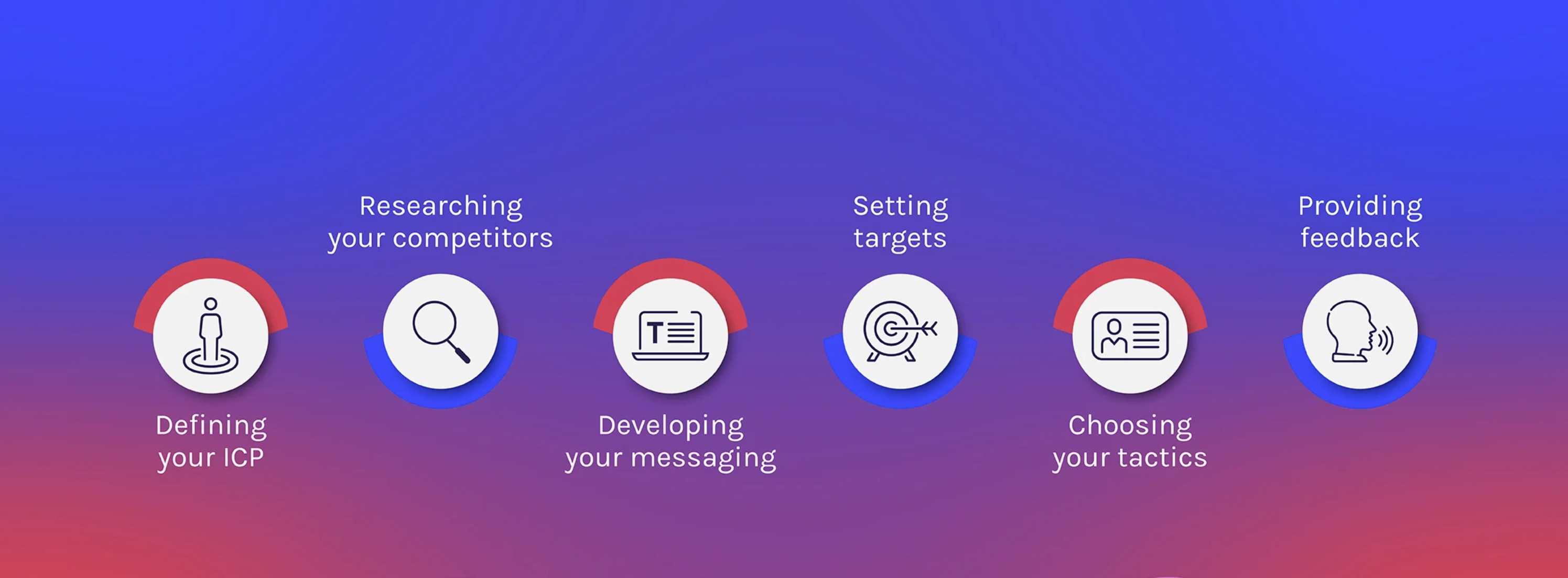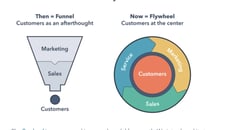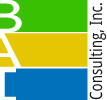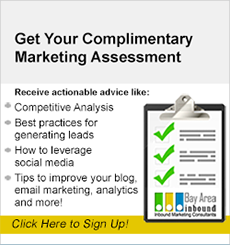What is a Go-to-Market Strategy?
A Go-to-Market (GTM) strategy should identify a market problem and position the product as a solution.
GTM Strategy is a roadmap that measures the viability of a solution's success and predicts it's performance based on market research including, but not limited to:
- Customer needs
- including pain points solved and applications for our product
- what prospects are willing to pay for a solution to these problems
- Market landscape and sizing
- ROI Analysis
- Business case
- Prior examples of related product launches
- Competitive data
- Target Verticals and Personas
- Positioning and Messaging
- Marketing channels to get message out there
- Content, to answer questions, drive deamand, and prove value
- Sales Channels
Why Do We Need Go-to-Market Strategy?
A Go-to-Market strategy can prevent expensive mistakes like poor market fit, over-saturation, wrong features, no market (customers), ineffective messaging and positioning. It's possible to use data such as customer needs, competitive analysis, similiar product launches to help determine if this will be a winning solution before we go to huge expense of developing a new product.
An old trick that helps with how we look at positioning for new products, is to ask ourselves this question: "If I segment the market enough, can our product be the market leader at something?" Meaning, if our product can't be the best at solving some pain point for our target customers, then it probably won't be a big winner; And perhaps we should keep looking at that before bringing the product to market.
Defining our Ideal Customer Profile
A good GTM strategy generally identifies a target audience, includes a marketing plan, and outlines a sales strategy. Specifically, we need a step-by-step plan of how we will enter the market, position the product for our ideal customer profile (ICP), and for how we will message to every buyer persona in our target ICP or vertical. Further, we need to include how we will get the message to those personas and what sales vehicle we will use.
Start with Minimum Viable Product, then Iterate
Once we launch into development, we have to keep working with the customer on their requirements "to tapeout and beyond" to insure we have market fit and customers to buy the product.
Likewise with bringing the product to Market. Even after we launch into the market, we need to keep researching and improving the Go-to-Market Strategy over time to match evolving customer and market needs.

What is the Danger If We Skip the Go-to-Market Strategy?
Even when we put great amounts of effort, time, money, and resources into developing a new product a poorly-planned-go-to-market strategy could cause our product to flop.
Some of the biggest brands have even experienced go-to-market failures. Take Apple, for example. In the 1980s, decades before Steve Jobs launched the game-changing iPhone, he led one of Apple’s biggest flops: the Apple Lisa computer.
Although Lisa had some of the best graphic technology of its time, only 10,000 units sold. Critics attribute the failure to Lisa’s misleading ads and high price, despite its low processing power.
While Apple and Steve Jobs recovered, smaller companies could have a lot more to lose when bringing a badly-defined product to market.
Go-To-Market Plan Methodologies
There are two major methods for developing a go-to-market strategy: the funnel and the flywheel.
While the traditional, one-off funnel method focuses on attracting leads and nurturing them into sales, the flywheel approach uses inbound marketing and resources to gain quick-time-to value for customers which allows us to build long-lasting customer relationships.
While the funnel is centered around the awareness, consideration, and decision stages of the customer’s journey, the circular flywheel focuses on attracting, engaging, and delighting prospects, leads, and customers.
When a lead becomes a customer, the flywheel continues as the company is tasked with attracting them, engaging them, and delighting them all over again with solid customer experiences, new content, and potentially new offerings.
Regardless of whether you’ve adopted the flywheel, or prefer to stick with the funnel, your planning process should include these steps.
The Components of a GTM Strategy
- Research to achieve Product Market Fit: What are the three most important pain points that our product solves, by vertical and persona?
- Target Audience: Identify your buying center and your buyer persona(s) and the pain point we solve for each, what is their win? What would they pay for the solution to this problem?
- Competition and Demand: Look at competition, what pain points they solve and is the market saturated? Or can we position against them with some better solution or segment to be the leader?
- Messaging: How will we message each personas "win" to them? Run tests for effectiveness of messaging.
- Define and build your content and lead-gen strategy. Inbound content with SEO draws people in when they are searching for a solution to their pain point, outbound creates more black-listed email addresses, but can be effective if done in a very targeted way. Build brand awareness and demand quickly using a mix of both.
- Define your distribution strategy. How will you sell your product? A website, an app, or a third-party distributor, direct sales force, inside (cheaper), field sales?
- Retain and delight your customers with offerings that give them quick time-to-value on the product continuously.
- Use best practices to optimize your pipeline and increase conversion rates.
- Measure performance in all areas, adjust, and iterate.
- Analyze and shorten the sales cycle
- Reduce customer acquisition cost
- Strategize ways to tap into your existing customer base
1. Identify Personas and their "Wins"
Different people involved in a target account have different needs and "wins" from our product. The key is to identify what their needs are and message about how our solution can solve those issues.
According to the book, The New Strategic Selling, the typical buying group for a complex B2B solution involves six decision-makers. These people make up what is called the "buying center."
Each of those buyers typically fills one of the following roles (though it’s important to note some job titles might occupy more than one role):
- Coach: Starts the buying process or shows initial interest, helps us navigate the complex sale,
- User: Uses your product regularly
- Technical Buyer: Convinces others the product is needed to solve a specified problem
- Financial Buyer: Owns the budget
- Approver: Final approver who pushes the initiative on a larger scale (typically someone in the C-suite)
- Gatekeeper: Blocks cold contact attempts due to too many people approaching in a scattergun method
Brainstorm the various job titles that could be impacted by your solution and then follow up with market research by talking to actual personas at target-vertical companies and see if these assumptions play out. All companies do things a little differently, and every product is a unique in matching to the personas needs, of course.
Research each role to get a general sense of what they do, their goals, their wins and their pain points. It’s critical to learn who these people are, what motivates them, and what their problems are, as they will be the ones to adopt your product to solve their problems, or not.
2. Create a "value matrix" to help identify messaging
After mapping your solutions to buying center personas, it’s time to map out your value matrix.
A value matrix is a breakdown of each buying center persona, their business problems, and how your product is valuable in solving those problems.
The value matrix will also include a relevant marketing messaging to tie the problem to your solution.
Create a messaging framework with each persona in one column. Below each persona, list the pain points they face daily. If your product can solve or ease any of these problems, include them in a row below, this is your messaging.
These messaging statements can be used to create effective content and can also be used to create battlecards to be used by sales when talking to prospects about your solutions to their problems.
3. Test your messaging
Once your value matrix is in place, it’s time to test your messaging.
Start by a/b testing titles and Call-to-Action graphical buttons via email to get it right.
Research your long-tail keyword strategy and match it to how your target customers say they would search for a solution to the problem that your products solve. Incorporate your findings when keywording in blogging for SEO to get found right when your customer is searching for a solution.
Then start advertising your content offers on marketing channels like social, kewording content, paid search, and email, using the messages you’ve just created for various audience members.
Three variables to test: the channel you advertise on, the audience you target, and the message you share
When deciding where to test, first consider where your audience is. Possible paid digital ad channels might be LinkedIn, Google Ads, Facebook, Instagram, and Twitter. Test the various channels and continue advertising on those showing high conversions. Stop investing in channels where you see low conversions.
Make sure your copy is short and large enough to read on ads. iframe tracking code onto each cloned landing pages with forms, so you use to attribute every lead to it's source for your analytics.
4. Optimize ads based on test results, then implement wide-scale
Next, optimize your audience. Some ad platforms have highly targeted audience settings for advertisers. For example, LinkedIn offers options for job title, job function, company size, and geographic location. Test different options to see who is more likely to click or convert.
For example, we noticed high clicks in certain industries, so we began targeting and using our ad budget to focus on that handful of industries on LinkedIn. The key here is spending money where you’ll get the biggest return on investment.
And you’ll be testing your message to see which versions resonate most with your audience. The engagement and conversion rates of your ads will indicate which value proposition and pain point keywords work best.
Once you’ve collected this data, you can base your larger campaigns on these successful insights.
5. Understand your buyer’s journey
With your personas and value matrix built, dive deeper to understand the journey a potential customer will take, both from the buyer’s perspective and from the perspective of your company.
From your B2B customer’s perspective, the buying process requires that they get answers to certain questions they have before they will pull the trigger and buy your solution. More or less, it will go like this:
The buyer realizes they have a business problem and researches the topic.
The buyer comes to our online blog article or downloads an ebook we advertise that talks about the solution to the problem they searched for on google, and our properly-keyworded article came up in answer to his or her search.
Additional questions can be answered via digital offers like:
- Proof of ROI, often answered by proof of cost-benefit analysis report or a third-party research report
- Competitive checklist to answer why our solution and not our competitor's, because our product functionality checks the boxes that are important to them.
- Weekly Jumpstart Webinar Series to see the software and ask questions about how they would use it, does it coexist with other software they use, does it have features to solve their specific problems, and so they become familiar with your product and if it is right for them.
- Customer Testamonials showin who else in their vertical is using the product and what success they are having with it.
- Resources such as "how to" blog articles or videos that show exactly how the product solves their pain points
- Free software demo so they start using and loving the solution
- Finally a one-on-one sales demo to answer more questions at which point they turn into a sales qualified lead (SQL)
Through their online investigation, and talking to their friends, the buyer shortlists potential solutions.
The buyer’s journey — from the perspective of the business — used to be a funnel. In the traditional sales funnel, there is a lot of general interest at the top. It gradually narrows down as opportunities fall out of the pipeline.
In the flywheel model, customers go through three stages: attract, engage, and delight with content and answers to their questions and solutions to customer pain points.
Grapic funnel v flywheel courtesy of HubSpot
Attract phase
Content at this stage grabs a potential customer’s attention. This can be in the form of a blog, whitepaper, or video. A lead gets here by clicking on an ad, social media post, or a search engine result. However, these behaviors do not indicate that this lead is ready to make a purchase yet.
Engage phase
In this stage, a prospect has demonstrated they have a problem your product can solve. They show this through digital behavior like downloading an ebook or joining a webinar, allowing you to engage them with educational content.
Marketing is typically in charge of the attract and engage phases. Your marketing team will need to generate interest and awareness and educate the relevant audience on a product’s value through messaging and content.
Some time in the engagement phase, the prospect should ask for a quote or a trial period. They’re nearing a decision on whether or not to purchase.
Once the prospect reaches this point, the sales team takes over.
Delight Phase
Right after your sales team closes the sale, the lead leaves the engage phase and enters the delight phase.
When your customer has reached this stage, they should be delighted with a painless onboarding process, friendly customer service options, and resources to help them get value out of your product quickly and continuously.
Renewal (Optional)
Our customer renews their contract or subscription because they found great value from our product because of resources we provided and made them aware of in their searches.
At this point, your customer should turn into a promoter. They bring you more customers, keeping the flywheel going and enabling you to grow more quickly.
6. Build brand awareness and demand with inbound and / or outbound methods
Fill your pipeline by gaining the attention of your target audience. This occurs through demand generation, which can happen with both inbound and outbound strategies.
With inbound, prospects discover your brand through marketing efforts of creating content and publishing it via channels that make sense for the target audient.
Outbound demand generation is when a salesperson contacts a lead through cold outreach tactics. They might do this by reaching out to a contact list, sending warm emails, phoning leads, or gathering leads at industry conferences.
Your content marketing team will drive this inbound traffic by finding and targeting keywords that your potential customers would search for and then creating and posting related content on your website.
At the core of content marketing is search engine optimization (SEO), which is the way a search engine ranks the content on the internet once a query is entered into the search bar. This will be a large source of your organic web traffic.
What goes into content marketing? It’s a cycle of keyword research, creation, and measurement
Keyword research: Identify keywords related to your product, analyze the volume (how often that keyword is searched), the difficulty of ranking for that keyword (i.e., how competitive that keyword is), and see who is already ranking for those keywords.
Content research: Brainstorm content topics that include that keyword. See what articles already exist around these topics and begin to plan your content calendar.
Content creation: Put those ideas into motion and have a writer create articles on those topics.
Design: Add relevant images, infographics, videos, and other multimedia to your content so it’s more visual and engaging.
Promote: Spread your content and drive traffic to your website by sharing the links via social media or emails to your customer database.
Build links: Reach out to other publishers and ask them to link to your content to gain even more traffic with link-building tactics. This gives you site authority, which helps improve your SEO rankings.
Conversion rate: Track and measure the engagement and conversion rates of your content. Keep doing what works and drop what doesn’t. From there, begin the content creation cycle again.
Your content team should develop content that aligns with the various stages of the buyer’s journey.
In today's over-communicated market, target keywords that drive traffic (SEO), and content is King.
For more information on improving your existing marketing machine, click the call-to-action button below.



